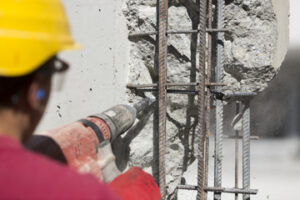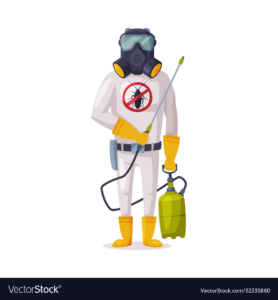Social media management involves a wide range of tasks, from planning to analyzing performance. It includes fostering interaction with the audience, monitoring conversations, and responding to customer feedback. It also requires a thorough understanding of the brand image.

Social media is constantly transforming, revealing new challenges and opportunities for businesses. Proper management processes can help you navigate these changes effectively.
SocialPilot is a powerful tool for scheduling, managing, and monitoring your social media accounts. Its automated scheduler saves time by ensuring that your posts are published at optimal engagement times, while its visual calendar helps you stay organized. The platform also allows you to edit and customize your account settings, making it easy to create a customized workflow for posting, managing, and reporting. SocialPilot offers multiple pricing tiers that offer varying levels of functionality, so you can choose the one that best meets your needs.
The platform enables you to manage your Facebook, Twitter, Instagram, and LinkedIn accounts in a single place. Its intuitive interface makes it simple to navigate and use. Its drag-and-drop feature and unified feed make it easy to upload images, videos, links, and text to your accounts. Its robust analytics tools provide insights into performance metrics and audience demographics. In addition, it offers built-in SEO tools that simplify content optimization without technical skills.
While SocialPilot is a good choice for small and medium-sized teams, it may not be suitable for larger companies that require advanced integrations and features. However, it does offer an extensive knowledge base and email support for troubleshooting issues. Moreover, it also provides white-glove concierge services for users in the Agency plan and higher.
Unlike Hootsuite, SocialPilot allows you to create posting schedules and automate them for each account. Once you’ve created a posting schedule, it will automatically create and publish your content at the specified time. It also allows you to post from your mobile device.
The SocialPilot app is available for iOS and Android devices. Its user-friendly design and simple navigation make it an excellent tool for beginners. In addition, it is free and has an extensive library of tutorials and FAQs.
SocialPilot is a powerful social media management tool with extensive functionality and integrations, but it is not perfect. Some features are not as useful as others, such as the ability to track brand mentions and hashtags. In addition, the platform has some limitations when it comes to generating engaging posts and creating content.
Hootsuite
Hootsuite is one of the most popular social media management tools available, offering a wide range of features for both individuals and businesses. The platform allows users to monitor and manage multiple social media accounts, schedule posts, and analyze performance data. It also provides a number of security measures to protect user account information and prevent unauthorized access from unrecognized devices.
The platform’s intuitive interface and centralized dashboard make it easy to navigate and use. Its robust analytics and insights tools help to identify key metrics and optimize social media marketing efforts. Lastly, its team collaboration capabilities provide a seamless workflow for businesses and organizations of all sizes.
To create a post, simply click New Post from the menu bar in the upper-left corner of the dashboard. This will open the Hootsuite Composer, where you can write your message, shorten links, add visuals, and select the networks you want to publish to. Once your content is ready to go, you can schedule it for the future using the calendar view, or review it in a stream view. You can even view a per-network preview of your post to ensure it will look good before you actually hit the “Publish” button.
Monitoring: The Hootsuite dashboard provides a bird’s eye view of your social media activity, allowing you to monitor comments, mentions, and direct messages from a single location. This feature is particularly useful for business-to-business interactions, where it is important to keep a close eye on customer concerns and queries. It also enables you to track the performance of your ads, including ROI and conversions.
The Hootsuite app enables you to monitor all of your accounts from your smartphone or tablet. This includes your Facebook, Twitter, LinkedIn, Instagram, and YouTube profiles, as well as any third-party apps that you may have integrated with the Hootsuite dashboard. You can also receive push notifications for messages that require your approval, ensuring that you never miss an important update or response. Finally, the app’s unified inbox and employee advocacy tools enable you to leverage your entire organization’s reach by encouraging employees to share approved content on their personal accounts.
Zoho Social
Zoho Social is a comprehensive social media management tool that offers a wide range of features and functionality. From content scheduling to monitoring and reporting, the platform helps businesses manage their social media efforts with ease.
Zoho’s recent feature upgrades have made the platform more robust and easier to use than ever before. From support for longer posts on X (formerly Twitter) to interactive polls for both X and LinkedIn, these updates allow Zoho Social users to save time and increase engagement with their audiences.
The platform’s analytics tools provide insight into the performance of your social media accounts, allowing you to see how well your posts are performing and what needs improvement. It also allows you to track hashtags, monitor brand mentions, and identify opportunities for growth. This data can help you develop a more strategic and effective social media marketing strategy that will drive results for your business.
In addition to its robust analytics tools, Zoho Social also includes a rich media library that lets you store and edit visuals for your posts. The software’s Design on Canva button makes it easy to create and edit visuals, which can be saved to your media library for future use. This feature can be especially helpful for marketers who manage multiple brands.
Moreover, Zoho Social allows teams to collaborate on projects with its centralized dashboard. This helps improve team productivity and ensures a consistent approach to social media. Its CRM integration provides a unified view of customer interactions, helping businesses align their social media strategy with broader marketing goals.
Besides the comprehensive social media management suite, Zoho also offers a free plan that allows managing one brand and basic features like scheduling, URL shortening and Twitter location management. It is available for small and medium-sized businesses. Alternatively, Zoho has a paid plan that is called Agency Plus and is designed for larger agencies. This plan comes with additional features such as the zShare browser extension and publishing on 6 social channels.
Brandwatch
Brandwatch is an enterprise social media management and consumer intelligence suite, tailored to empower brands and businesses of all sizes. Its powerful Iris AI technology gives it an edge over the competition, processing and analyzing data in real-time to deliver useful insights. It also offers a variety of API access, third-party integrations, and collaborative features to support teamwork and maximize efficiency.
Its centralized dashboard is a single point of truth for all your social media monitoring, influencer marketing, and campaign analytics. Its customizable reports provide actionable insight into the performance of your campaigns and the health of your brand’s reputation. It also offers a powerful search function to help you find and track keywords and topics relevant to your business. With its multi-platform support, you can easily integrate and use it with your favorite third-party tools.
One of the most notable features of the Brandwatch social media management software is its ability to monitor and analyze online conversations about your brand, products, or services. This can help you understand what people are thinking about your company and improve your customer service. You can even track your competitors’ behavior and monitor their influencer marketing campaigns.
The user-friendly platform allows you to filter and sort your data by category, date, and location. You can even export your data into Excel, CSV, JPG, and PNG formats for easy usage. Its alert system also sends notifications to users (even those without the tool’s logins) when conversation, sentiment, or influencer chatter rises above certain thresholds.
Consumer Research includes a large library of historical conversations and full data firehoses from Twitter, Reddit, Tumblr, and thousands of other sources. It also provides audience analysis through the Social Panels feature, which lets you create custom research panels from millions of online authors or niche stakeholder groups. It also helps you discover new audiences that are talking about your brand.
The social media management tools offered by Brandwatch include an array of features and functionality, including segmentation, geolocation, sentiment analysis, charting, and metadata. You can even import other text-based content into the platform, such as call logs and support tickets. You can also monitor conversations using specific keywords or hashtags.








